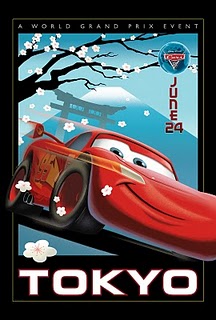My family recently drove to Ohio and back. Packing well is the key to making it, which includes both packing food and packing for the trip. The last time we took the car, I thought, “Hey, we have the car! Let’s bring the boys’ scooters, and helmets, and…” The car was full, we could never find anything, and I think we forgot several things when we left. This time, I packed sparingly. Five outfits for 9 days for each of us. No wheeled vehicles. I put a couple dozen CDs is a holder, and did the same with DVDs for the player we got for the boys. And the ride went great. Except for traffic around Chicago, which seems to be a level of hell on earth. On the way out, we went 60 miles in 3 hours. Excruciating. We stopped once about every 2 hours, but never for long. I’d packed enough sandwiches and snacks and filled all our refillable water bottles; we didn’t buy any food going out or back. This is good, because when I get hungry and am traveling, my food consciousness goes missing and I think something like, “Mini can of pringles, grape gatorade and snickers ice cream bar. Awesome!” It’s like I’m flashing back one of the few (no, really) times in my feckless youth that I “ate a sandwich.” Apparently when I travel, I get off my local-organic high horse and put her in the stable while I’m away.
Here, in no order, are a few things I learned (or was reminded of)
1. Ask the kids if they need to relieve themselves BEFORE we pass the rest stop. Nothing like passing the sign and thinking, “Heh, we’ll totally make it another 47 miles.” only to hear a voice from the back seat declare otherwise.
2. Traffic around Chicago is just dreadful. I don’t know what savvy people do to avoid it, as we were driving mid day both ways, but I’m going to research it before we do that drive again.
3. Toft’s ice cream is really, really good.
4. Not a lot of people from North Dakota on the road. Way more people from the south and east coast traveling west. Also, stupid license plate frames make some plates hard to see. We had to look up Great Faces, Great Places on my husband’s smart phone.
5. When I get back to writing fiction (which is supposed to be this fall when Guppy starts kindergarten) and if I ever need to make up character names, I need only consult a map or go on a road trip. The exit-name pairings are a goldmine: Constantine Middlebury, Madison and Dane DeForest, Clayton Trotwood, Phillip Greenville, though some, like Brice Reynolds and Kirk Baltimore, sound like they might have a future in adult films. I may have to do a post just on these, which entertained me greatly.
6. I am unable to see signs for Menomonie WI without singing Mahna Mahna.
7. I am unable to see signs for Rockford IL without humming the Rockford Files theme song.
8. Car dvd players are amazing pieces of technology. I can only imagine how much less pleasant the trip would have been without them for the boys. But I’m so glad I listened to a friend’s advice: put off taking them out as long as possible, or even that magic wears thin.






